Read Reviews
The Best Gardeners Knives
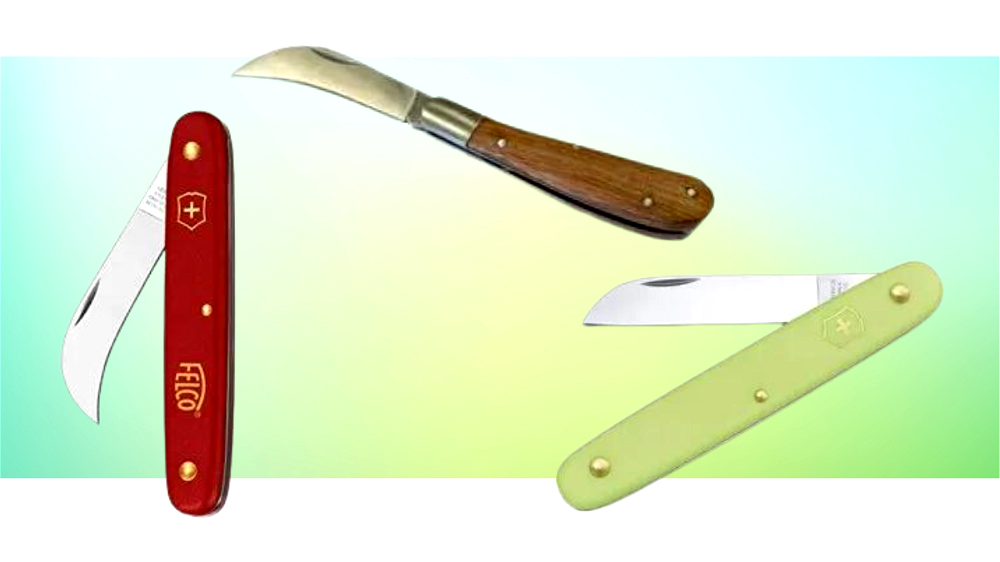
-
Spear & Jackson Razorsharp Garden Knife
-
Felco Grafting and Pruning Knife
-
Victorinox Floral Knife
-
Whitby Pruning Pocket Knife
-
Draper 67068 Slimline Pruning Knife
Gardeners Knife Reviews
- Folds down to 10 cm making it easy to carry in your pocket
- Locks securely into place when open and closed
- Easy to pull blade out of handle using grooved fingerhold
- Relatively long blade at 8.4 cm can be useful for larger stems
- Attractive wooden handle with an ergonomic shape
- Blade may require sharpening after a few hours' use
A traditional-looking knife with a wooden handle, this Spear & Jackson Razorsharp Garden Knife has been designed in conjunction with the horticultural team of London’s popular Kew Gardens.
It has the longest blade of all the knives featured here, measuring 8.4 cm. The stainless steel blade is curved and suitable for a range of gardening jobs from pruning plants, to harvesting vegetables, to stripping bamboo canes. After several hours use, the blade may need re-sharpening.
Both the blade and the handle are built to hold up against the UK weather; the blade is rust resistant and easy to wipe clean, and the wooden handle has been weatherproofed to create a long-lasting tool.
The handle itself measures just 10 cm, so when the knife is folded closed it is roughly the same size as the Felco Grafting and Pruning Knife – but when extended, the blade is longer. This means that, despite the larger blade, this knife still fits easily into even small pockets. At its widest point, the handle measures 3.5 cm.
Unlike a lot of gardeners knives with plastic handles, the Spear & Jackson knife is ergonomically shaped giving the opportunity for better grip. When the blade folds into the handle, a small part of the blade remains visible (with a small fingerhold) making it easy to pull out again when required.
This is one of the best gardening knives if you’re after a wooden handle and a long blade. It’s suitable to be used for a range of different jobs, although may need re-sharpening occasionally.
Did you find this review helpful?
- Blade holds its edge well
- Sharp enough for a range of jobs from pruning, to grafting, to cutting cardboard
- Folds away into a very compact 10 cm unit that easily fits in pockets
- Red handle helps with visibility if dropped in the undergrowth
- Good price for the quality and brand
- Closing the knife can be difficult as it may be a little stiff so a lot of care is needed
- Design may only suit right handed users, left handed gardeners may find it more difficult to use
A page on gardening knives wouldn’t be complete without a product by Felco. The Felco Grafting and Pruning Knife is a quality tool from a reputable company, perfect for carrying around the garden and using on anything from trees to crop harvest.
When closed, it measures just 10 x 2.4 cm, meaning it fits easily into any pocket without adding bulk. When extended, the curved blade is 5.7 cm long, made from stainless steel with a thickness of around 2.2 mm.
Made in Switzerland, it has the quality you would expect from a Swiss knife, and the blade folds backwards into the red nylon handle. Of course, you have to be careful when folding it in, as this is where fingers could get caught by the blade.
The blade clicks securely into place, both upon opening and closing.
It’s very sharp, creating a clean edge when taking cuttings or grafting. In fact, it’s useful for a number of chores around the home – not just in the garden. The blade is also sharp enough for stripping cables and cutting cardboard.
Overall, this is one of the best gardeners knives because it’s compact, strong and versatile in the jobs it can accomplish. Thanks to its size, it can be kept in a pocket at all times and be at hand whenever needed.
Did you find this review helpful?
- Very sharp blade straight out the box
- Lightweight (34 g) and compact - barely noticeable when carrying in pocket
- Good for pruning flowers and plants
- Available in a range of colours - useful to avoid losing it in the garden and can also make a good gift
- May be a little small for larger pruning jobs
Available in a range of colours, the Victorinox Floral Knife is a popular choice amongst gardeners. This is a quality knife from a brand that’s well-known for producing tools of a high standard.
Intended for pruning and cutting flowers, it has a straight stainless-steel blade that measures 5.5 cm long. The blade is extremely sharp, and creates precise, clean cuts whilst holding its edge well.
The blade folds neatly into the 10 cm nylon handle, resulting in an item that is both compact and lightweight (34 g!) to carry around. It’s a comfortable size that fits securely in the hand, though some may find it to be a little small overall. Measuring 15.5 cm with the blade extended, it’s roughly the same size as a standard biro.
Nevertheless, this doesn’t stop it from being a reliable workhorse with plenty of uses in the garden. If you’re after a quality tool, this is one of the best gardeners knives to choose thanks to its robust construction and sharp, durable blade. Just remember that it’s reasonably small, so better for flowers and pruning rather than cutting through thicker vegetation.
Also, the choice of colours doesn’t just have an aesthetic benefit; you can choose a shade that will be easy to find in the garden in case it gets dropped. Plus, if buying this knife as a gift for a fellow gardening enthusiast, you can even get one in their favourite colour.
Did you find this review helpful?
- Smallest handle but second largest blade makes it compact but still versatile
- Wooden handle is warm, good quality and easy to grip thanks to the slight curvature
- Overall quality is high
- Blade retains its sharpness over time
- Slightly curved blade makes it easier to cut through thicker stalks and vegetation
- Not particularly easy to open and close, can be a little stiff
The Whitby Pruning Pocket Knife is a good all-rounder, suitable for use on the allotment, in the garden, and around the house.
Its wooden handle is slightly smaller than those of the other knives featured on this page, measuring 8.89 cm. Yet, despite its more compact size, it actually has the second longest blade, at 6.35 cm.
The handle remains comfortable to hold and use, even though it’s over 1 cm shorter than the other knives. And, of course, the knife is easy to slip into a small pocket when folded away.
Made from stainless steel, the blade is slightly curved which helps with cutting through thicker vegetation like cabbage stalks and rose bushes. It’s sharp on arrival, and maintains its sharpness well whilst working. Plus, the whole knife is very sturdy, with several customers reporting to have used theirs for several years (with it still going strong!).
The blade is relatively stiff to pull out, which is a good safety measure but means care must be taking when extracting the blade as well as putting it away again. There is a grooved fingerhold on the blade itself which is visible when the knife is folded, making it easier to pull out when required.
If you want an all-purpose knife, this is one of the best gardeners knives to go for due to its size, versatility and blade shape.
Did you find this review helpful?
- Very sharp out of the box, no need to sharpen straight away
- Small 10 cm handle fits easily into pocket, helped by slimline design
- Robust construction, made entirely from stainless steel
- Does not lose sharpness quickly
- Lanyard included to make it harder to misplace
- Narrow handle is not very ergonomic and may become uncomfortable to hold
- Locking mechanism means it is illegal to carry off own private property (eg. to transport to allotment)
If you’re looking for a relatively inexpensive yet quality knife, the Draper Slimline Pruning Knife is a good option to consider.
Despite its low price it has a high-quality construction and can be used for a variety of different applications, from pruning, to opening compost bags, to whittling.
The stainless-steel blade is 6 cm long and folds into the 10 cm metal handle – also made from stainless steel. It locks into place and has a release mechanism to free the blade after use. Be aware that the fact this blade locks means that the knife can’t be carried in public areas in the UK. It should therefore only be used in private gardens, not transported to allotments or other locations.
This Draper Slimline Gardener’s Knife has a slightly curved blade and arrives sharpened, it performs as an all-round useful tool, and is one of the best gardeners knives to go for if you’re after value for money. Considering its build quality and versatility, you might expect this knife to be pricier than it is.
Also, there is a 35 cm detachable lanyard included with this knife, which can be used in a variety of different ways to keep the knife close to hand. It can either be looped around your neck, or threaded through a belt loop, to make it easy to find whilst gardening.
One downside comes in the knife’s slimline design, as it can feel almost a little too narrow, making it less ergonomic.
Did you find this review helpful?
How to Choose the Best Gardeners Knife
Anyone who spends a lot of time in the garden will know the importance of a great gardening knife. In fact, the one time you leave your trusted knife in the house, you can almost guarantee you’ll need it to do a spot of pruning, cutting or cultivating.
If you’re looking to upgrade your current knife, or are a first-time buyer trying to choose the best gardeners knife for your garden, the following information will give you a good idea of what to look out for (and what to avoid!).
Benefits and Uses of a Gardeners Knife
Honestly, a gardeners knife will probably become one of the most useful gardening tools you own. Not only are they small, compact and easy to store and use, they’re also extremely versatile.
Many folding gardeners knives measure around 10 cm with their blade away, which makes them extremely easy to put in a pocket and carry around until they’re needed in the garden.
The knives can be used for a huge range of tasks, from pruning to grafting trees, cutting roots, harvesting crops and opening bags of grass seed/fertiliser/multi purpose compost amongst other things.
Finally, your knife can be used to lift and remove weeds that grow near your plants. There’s no need to have a weeding tool to hand, you can simply cut the weeds out so that they won’t regrow.
READ NEXT: The Best Weeding Tools
Different Design Elements
Gardeners knives can vary in design and you’ll want to make sure that you choose the most suitable style for you and the type of jobs you’ll be doing.
Handle Material and Comfort
The three most common materials for the handles of gardening knifes are wood, stainless steel and nylon plastic. All of these are robust and strong enough for a gardening knife, but each material also has its own properties – some of which you may prefer over others.
Nylon handles are strong but don’t tend to be ergonomically shaped. The rigidity may become uncomfortable if the knife is being used for prolonged periods, although they’re generally still very popular with a lot of gardeners. You can also find nylon handles in different colours, which can help them be easier to spot if accidentally dropped in the undergrowth.
Stainless-steel handles are tough and unforgiving. They are very strong, but may be uncomfortable to use for longer jobs – especially without gloves on. In the winter, they may get very cold.
Wooden handles tend to feel ‘warmer’ than other, harder materials, which makes them a favourite of some gardeners. They’re also often curved and more ergonomically shaped making them reasonably pleasant to hold.
With all handles, it helps if they have a reasonable thickness to them (around 2.5 cm thick as a benchmark) because they will be more comfortable to hold.
Foldable Knives
Not all garden knives are foldable, and non-foldable knives will naturally be a little stronger than those with a pivotal join. However, they are a lot less safe and convenient to carry around.
The beauty of a foldable garden knife is that you can completely forget it’s in your pocket most of the time, but, when you see something that needs pruning, you’ll have the right tool already on your person.
Length and Style of the Blade
Gardeners knives tend to vary in size, with foldable blades ranging from around 5 – 9 cm. Knives that aren’t foldable can have bigger blades because the blade doesn’t need to fit into the housing of the handle.
The design and material of the blade can also impact how easy it is to use. Most blades are made using 440- or 420-grade stainless steel. Both grades are durable and resistant to rust. 440 stainless steel has a higher carbon content to 420 stainless steel and it’s harder because of this. However, this can also mean that it is slightly more challenging to sharpen.
Some gardening knives have a serrated edge that can be used for sawing – these may also be referred to as pruning saws.
Other knives have straight blades and are useful for chopping and cutting.
You will also come across gardeners knives with curves blade. These can be useful for getting into harder-to-reach places.
READ NEXT: The Best Pruning Saws
Knife Care and Maintenance
Like most gardening tools, the key to making sure your gardening knife lasts a long time is care and maintenance. Not looking after it properly can lead to rusty and blunt blades.
A good rule of thumb is to never put your tools away when they are dirty. A quick wipe down with a cloth or rag is usually enough to remove any contaminates from the blade.
If the dirt is harder to remove, use a brush to get rid of any caked-on dirt, then wash off any remaining dirt with warm water. Dry your knife thoroughly using a towel.
Unpainted wooden handles require a bit of extra care. Oil them on a regular basis, allowing the oil to penetrate the wood for around 10 minutes before buffing the handle with a cloth.
If you have used your knife on diseased plants, you’ll need to disinfect it so that it doesn’t spread the infection to other plants. Disinfect the blade using rubbing alcohol and a clean cloth.
You should also sharpen your knife whenever you start to notice the blades losing their sharpness. Using a blunt blade can seriously damage your plants.
Legal Considerations
There are certain legalities involved with buying a gardeners knife. Some are more obvious – like the fact you need to be over 18 – but others may take you by surprise.
If you buy a gardening knife with a locking mechanism, it is illegal to carry it off your private property in the UK. This means that you won’t be able to take it to your allotment, or do any other pruning or gardening jobs outside of your garden.
This is the sort of thing that may not seem immediately obvious when buying a garden knife, so it’s worth bearing in mind! Knives that don’t lock open or closed aren’t governed by the same laws.
Gardeners Knife FAQs
A curved blade can make it easier to get the knife into areas that are hard to reach. You may be able to ‘hook’ the blade around a plant or stem to help with cutting it. Straight blades may be harder to use in these scenarios.
Be diligent with keeping the knife clean. Using rubbing alcohol on the blade is a good way to disinfect it between plants, and it can stop disease from travelling between them.
‘Grafting’ is the process of joining two trees together so that the resulting tree has the roots of one type of tree and the flowers of another. With fruit trees, this can increase the rate at which they grow and are able to produce fruit, for example.
Here’s the basic process of grafting trees:
- First, you need to saw off the top of a small tree. This tree will be used as ‘rootstock’.
- Then, using your gardeners knife you will make a from the outside towards the centre of the tree. Afterwards, pry some of the bark away from the core of the tree, revealing the cambium layer.
- Take a small twig cutting from the tree that you want to graft into the rootstock. Use your knife to cut the base of the twig into a sharp ‘V’. This will be the ‘scion’.
- Slide the scion into rootstock between the bark and cambium layer.
- Repeat the process on the other side that you have two scions.
- Wrap the rootstock with non-adhesive barrier tape in order to hold the scions tightly in place.
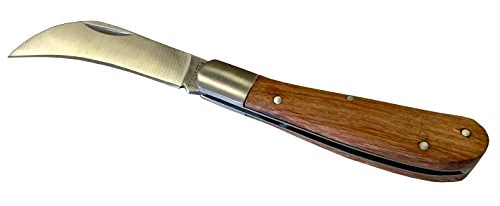
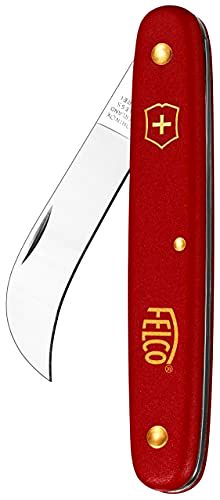
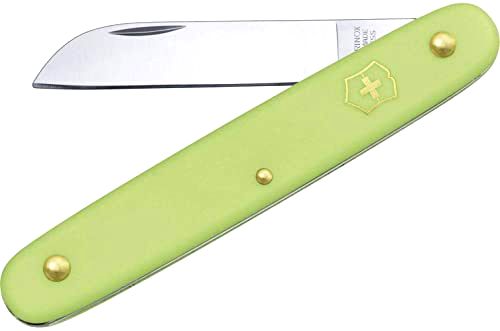
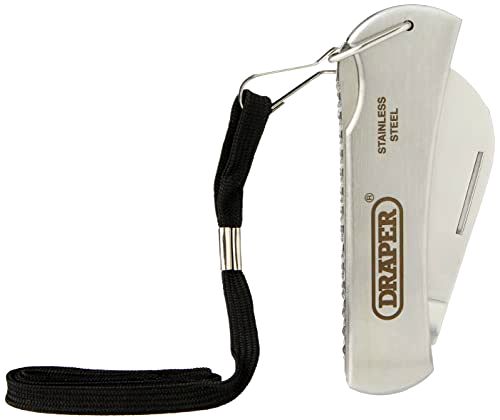

Share